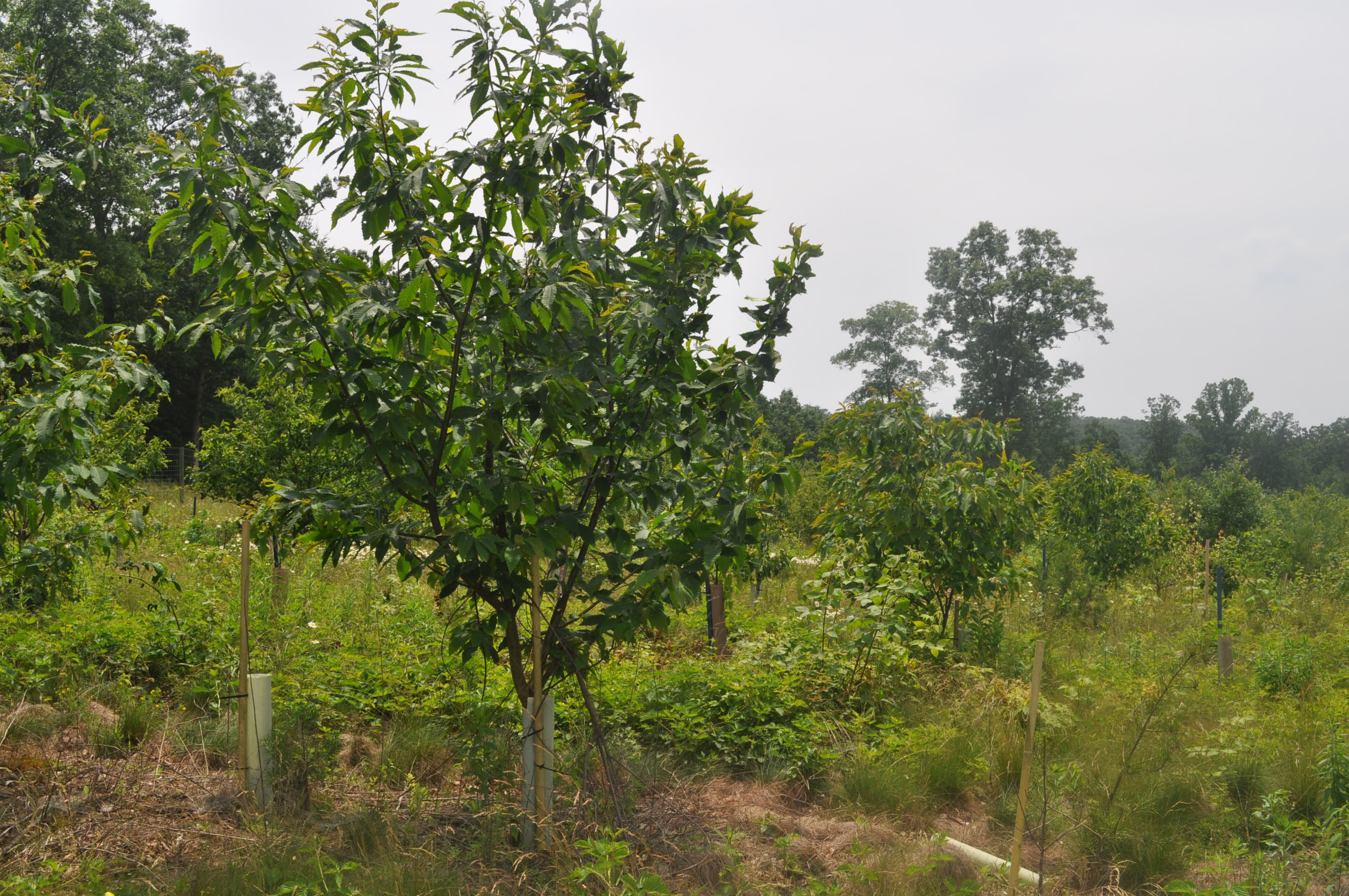
Site 3 of the Long-term Ecological Reflections Project (LTERP) at Shaver’s Creek is a Chestnut plantation at the corner of Scare Pond and Hammond Roads, about one-half mile up the hill above Stone Valley Recreation Area’s main lodge.
For the next 100 years, writers, artists, musicians, children, students, and community members are invited to reflect on this and the seven other locations designated as part of the LTERP. This collection of reflections will provide an interesting and unique record over the next century so that future generations can better learn the story of this place.
Please enjoy these excerpts from several contributors to the project, and follow the links to read their full Creek Journals.
David Taylor (2013)
“Bravo to all involved! I look forward to encountering a forest with chestnut trees. I have to wonder, though, no matter which type of research might succeed, whether those trees would be American chestnuts. It’s an odd and funny thought to imagine those back-crossed chestnuts thriving and sorting through my imagined memory of what they looked like before 1900. Or if the gene-altered chestnuts are the better option and the trees I’ll see look identical to pre-blight American chestnuts, will I have that strange reaction of imagining them with little Frankenstein-like bolts on their trunks? Please listen when I say I’m not saying any of this is bad. Haven’t forests been hybridizing and “genetically modifying” themselves for millennia? No, not by splicing in a wheat gene or the introduction of another continent’s chestnut, but those forests didn’t have to respond to introduced stressors and diseases in a matter of a generation or two. The nature we imagine as non-human no longer exists. I’m not sure that’s a lament, but it is to say that experiencing “nature” is a complex moment, whether it be a scientific observation or an artistic response. In twenty years, I hope I can walk into the woods, gather some chestnuts and roast them over an open fire with my grandkids. What a wild story then I’ll have to tell them.”
Ian Marshall, Author/LTERP Founder (2006)
The irony of my complaint about monoculture is that I’m sitting in a field dedicated to the idea of monoculture — hence the fence. But I guess the idea is to eventually return this new breed of chestnuts to the forest and thereby enhance biodiversity. And even here, within the confines of a fence, I’m hearing three different birdcalls, the hum of bees, and the clack of a grasshopper’s wings. Between the tubes with sprouting chestnuts I see stalks of rye grass a foot and a half high, fully ripe and going wonderfully to seed. Around my head circulate flies attracted to my sweat on this sunny day, and all around me flowers bloom. So does the tendency of life to ignore artificial borders (like fences and lines on a map) mean that it’s futile to try to prevent the spread of species in a global economy? Or does it speak to life’s inherent drive toward diversity?
Scott Weidensaul, Author (2006)
I knew the old stumps, a few big fallen trees left by the blight and fighting off rot, but to me the chestnuts were mostly an historical tease, saplings rising from old rootstock — the same long, lanceolate leaves, sharply serrated, that my great-grandfather knew, but none of the height or breadth of the pre-blight forest. I’d never sit beneath the shade of a big chestnut, kicking away the porcupinish burrs for a comfortable seat, and peel the smooth, silky husk from the raw nuts like he had, and pop them into my mouth. The rare times when I found a viable chestnut seed, I didn’t eat it. I planted it.
I keep a photograph, clipped from a magazine, to remind me of what I missed by a couple generations. Two tiny human figures stand between the enormous trunks of virgin chestnuts, somewhere in the southern Appalachians a century ago. It would have taken eight or ten people with outstretched arms to encircle either tree. The bark is corrugated, like a big tuliptree’s, but with more grace. The ground is littered with old burrs; the trees must have dropped nuts by the literal ton.
Katie Myers (2007)
Maybe people think that one tree is as good as any other, and as long as the forests still remain we have not lost anything. I disagree. How many organisms that specialized on chestnut trees have been lost? Most people do not care what happens to fungi, tiny insects, and bacteria even though scientists are coming to learn how widespread intimate relationships between organisms (symbioses) are in nature. We depend on symbiotic bacteria in legumes and cow stomachs to provide valuable food. At the same time, 90% of plants form associations with fungi in their roots that help them gather water and nutrients. We no longer have the ability to say that an organism’s existence does not matter if it is not cute and fuzzy.
Todd Davis (2008)
Give Us This Day
July and the ink
of blackcap raspberries
splatters ditches
and clearcuts: green
banks singing, my tongue
rocking inside my mouth.
Who blessed by this dark
sugar could stay quiet?
Ants wander drunk
into my bucket, across
the visible world
that feeds us, that makes
an offering each day:
beach plum or pawpaw,
morel or puffball, even
the spider-legs
of purslane
and the sharp
bite of sorrel.
For More Information
For more information on the Long-term Ecological Reflections Project, or to learn how to contribute material, please email Doug Wentzel at djw105@psu.edu.
